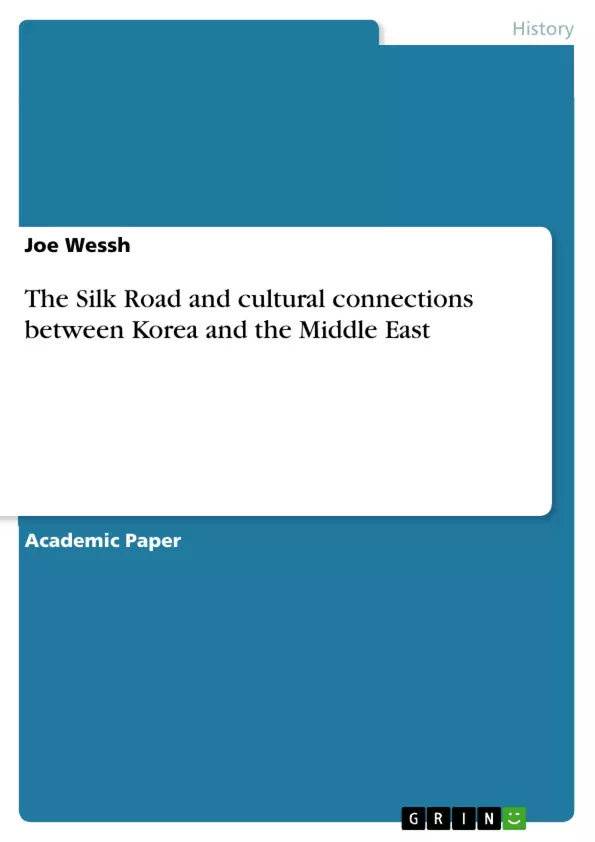What was the Silk Road? In what ways did it facilitate the cultural interaction between Korea and Middle-East? These are the main questions of this essay.
The Silk Road has had an unprecedented impact on people in terms of cultural connections and the exchange of products. This trade network stretched from the Mediterranean Sea all the way to Japan and the Korean Peninsula, linking societies across Eurasia continent. It thrived majorly across East Asia and Central Asia from 100 BCE to 1500 CE.
Many recent studies have researched the historical cross-cultural interaction and trading relations among Eurasian societies through the Silk Road. The studies have analyzed the explicit aspects and shifting historical backgrounds that influence the Silk Road societies and interrelation, as well as the exchange of ideas and innovations that link East Asia to the Middle East. As such, the research studies have developed a new viewpoint on the long-distance cultural interactions in Afro-Eurasia.
Inhaltsverzeichnis (Table of Contents)
- Introduction
- Main Questions/ Ideas in the Article
- Application of Big History Framework to the Article's Content
Zielsetzung und Themenschwerpunkte (Objectives and Key Themes)
This article examines the historical connections between the Korean peninsula and the Middle East, specifically focusing on the impact of the Silk Road on cultural exchange and interaction. The article utilizes the Big History framework to explore the long-term impact of this trade route on human history.
- The role of the Silk Road in facilitating cultural exchange between Korea and the Middle East
- The impact of the Silk Road on the development of Korean society and culture
- The influence of Islamic culture on Korea through the Silk Road
- The significance of the Silk Road as a catalyst for human interaction and collective learning
- The historical and contemporary significance of the Silk Road in shaping global connections
Zusammenfassung der Kapitel (Chapter Summaries)
- Introduction: The Silk Road is introduced as a crucial network for cultural exchange and trade, connecting societies across Eurasia. The article highlights the route's significance in fostering economic and cultural interactions from 100 BCE to 1500 CE. It also mentions the increasing scholarly interest in understanding the Silk Road's impact on cultural interactions between East Asia and the Middle East.
- Main Questions/ Ideas in the Article: The article explores the cultural exchange between Korea and the Middle East through the Silk Road, specifically focusing on the ways the Silk Road facilitated this interaction. The author examines the historical context of the Silk Road and highlights evidence of cultural influence between Korea and the Middle East, citing examples from the Bronze Age, the development of navigation technologies, and the spread of Islam.
- Application of Big History Framework to the Article's Content: The article uses the Big History framework to analyze the Silk Road's impact on human history. It emphasizes the role of the Silk Road in promoting social, technological, and economic interactions, which led to increased complexity in human interactions and collective learning.
Schlüsselwörter (Keywords)
The article focuses on the historical significance of the Silk Road, exploring its role in facilitating cultural exchange and interaction between Korea and the Middle East. Key terms include Silk Road, cultural exchange, Korean-Middle East relations, Islam in Korea, Big History framework, human interaction, and collective learning.
- Quote paper
- Joe Wessh (Author), 2018, The Silk Road and cultural connections between Korea and the Middle East, Munich, GRIN Verlag, https://www.grin.com/document/455072



